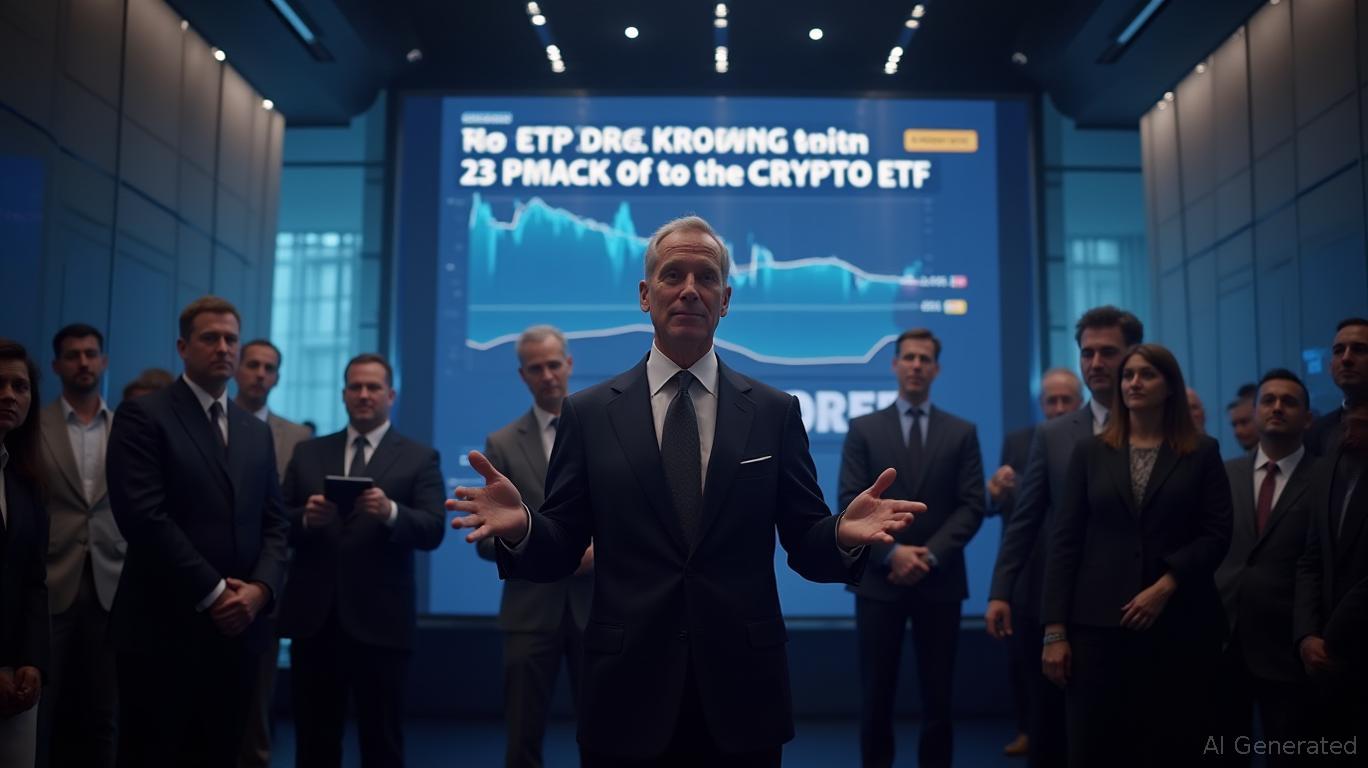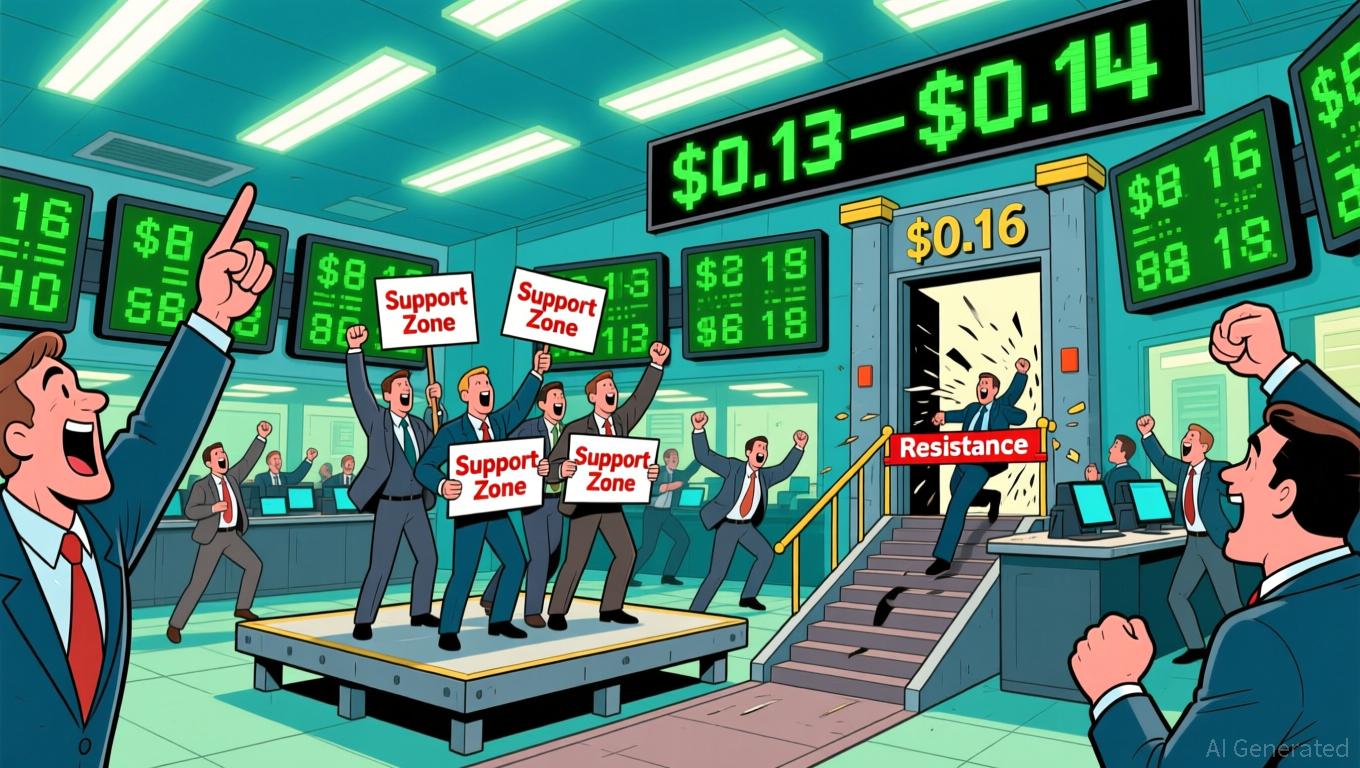SEC's Policy Change Paves the Way for a Surge in Crypto ETFs
- The SEC approved generic listing standards for spot crypto ETPs, slashing approval timelines from 240 to 75 days and triggering a surge in ETF filings. - The framework applies to assets traded on ISG members or with CFTC-regulated futures, enabling broader access to large-cap altcoins like Solana and XRP. - While firms like Grayscale and Bitwise filed multi-coin ETF proposals, experts warn success depends on underlying crypto fundamentals and market narratives. - Regulatory alignment with Trump-era pro-c

The U.S. Securities and Exchange Commission (SEC) has introduced universal listing guidelines for spot cryptocurrency exchange-traded products (ETPs), aiming to simplify the approval process and potentially trigger a wave of new crypto ETFs. By removing the requirement for individual regulatory assessments for each product, the SEC intends to cut the average approval period from 240 days down to 75 days CoinDesk, [ 1 ]. This update, inspired by similar changes made for bond and equity ETFs in 2019, is anticipated to open the floodgates for new applications and launches, with analysts forecasting a notable uptick in activity CNBC, [ 2 ]. The revised standards apply to assets that either trade on Intermarket Surveillance Group (ISG) member exchanges or have had CFTC-supervised futures contracts for at least six months Blockchain Council, [ 3 ].
This approval is set to expand investor opportunities beyond
The SEC’s move signals a broader shift in regulatory policy, aligning with the pro-crypto approach of the Trump administration and standing in contrast to the more cautious stance under Biden. The finalized rules, set for July 2025, will allow for faster approvals of tokens with established CFTC-regulated futures, likely putting Solana and XRP at the front of the line in the near future CNBC, [ 6 ]. Steve Feinour from Stradley Ronon expects the first of these products could hit the market as soon as October, though issuers must still navigate legal paperwork and coordinate with service providers Blockchain Council, [ 7 ].
Investors are urged to remain vigilant, especially regarding ETFs based on smaller-cap tokens. Kyle DaCruz of VanEck cautions that the market could see a surge in ETFs linked to highly speculative assets with low liquidity or practical use, posing risks for less experienced investors Finance Monthly, [ 8 ]. The SEC’s latest guidance on disclosures for crypto ETFs emphasizes the importance of transparency, mandating comprehensive information on risks such as price swings, custody solutions, and operational challenges SEC, [ 9 ]. These requirements are designed to safeguard investors and build confidence in a sector long associated with unpredictability.
The potential long-term effects on the crypto industry could be significant. By making digital assets more accessible to institutions, the SEC’s new rules could drive broader adoption, especially among retirement and pension funds. However, the influx of new ETF offerings also brings concerns about possible oversaturation and increased volatility. As Bitwise’s Teddy Fusaro observes, the crypto sector is experiencing a pivotal moment, but the real challenge will be whether investor demand for these ETFs leads to lasting inflows and price steadiness CoinDesk, [ 10 ].
Disclaimer: The content of this article solely reflects the author's opinion and does not represent the platform in any capacity. This article is not intended to serve as a reference for making investment decisions.
You may also like
Bitcoin News Update: S&P Rating Drop Highlights Tether’s Risky Asset Holdings and Lack of Transparency
- S&P downgrades Tether's USDT to "5 (weak)" due to high-risk reserves and transparency gaps. - Tether's 5.6% BTC exposure exceeds overcollateralization margins, risking undercollateralization if prices drop. - CEO dismisses critique as traditional finance bias, claiming no "toxic" assets in reserves. - Regulators intensify scrutiny as stablecoin centralization risks emerge amid $184B USDT circulation. - S&P urges Tether to reduce risky assets and enhance reserve disclosure to rebuild trust.

Dogecoin Latest Updates: Is a Repeat Performance on the Horizon? Holding $0.15 May Signal a 611% Rally for Dogecoin
- Dogecoin (DOGE) stabilized near $0.15 support, triggering historical 611% rally potential to $1 by 2026. - Grayscale's GDOG ETF and pending Bitwise BWOW ETF mark institutional adoption, though initial inflows remain muted. - Technical indicators show mixed momentum with RSI near oversold levels and key resistance at $0.16. - Market remains divided as ETF-driven liquidity and on-chain infrastructure contrast with macroeconomic and regulatory risks.

Turkmenistan’s Approach to Cryptocurrency: Centralized Oversight Amidst a Decentralized Age
- Turkmenistan legalizes crypto trading under strict 2026 regulations, granting state control over exchanges, mining , and custodial services. - Law mandates KYC/AML compliance, bans traditional banks from crypto services, and classifies digital assets into "backed" and "unbacked" categories. - Central bank gains authority to operate state-monitored distributed ledgers, contrasting with decentralized approaches in South Korea and Bhutan. - Framework aims to balance innovation with oversight, testing Turkme
Bitcoin News Update: Has $162 Billion Left Crypto Due to Institutional Buying or a Broader Market Pullback?
- BlackRock deposited 4,198 BTC and 43,237 ETH into Coinbase amid crypto sell-offs, despite $355.5M Bitcoin ETF outflows. - A 1.8M BTC ($162B) overnight exchange withdrawal sparks speculation about institutional accumulation or portfolio rebalancing. - $40B in BTC/ETH exchange inflows and record $51.1B Binance stablecoin reserves highlight institutional demand for regulated crypto products. - On-chain data shows 45% of large deposits (≥100 BTC) and 1.8M BTC withdrawals, indicating mixed market sentiment ah
